Canadian painter Homer Watson (1855–1936) was intrigued by spiritualism throughout his life and Moonlit Stream, with its evocative darkness and unnatural colours, may be interpreted as supporting these ideas. Although his writings on the subject are vague, he seems to have adhered to a pantheistic approach that sought out transcendent meaning in natural phenomena. “All nature up to the horizon uttered the sombre chord that would be in unison with the refrain of the lost and the caverns of the forest vibrated in their mystic depth,” he reminisced in an undated description of experiencing a landscape at night. “[Everything] seemed connected together by invisible ties and the limits of earth seemed to mount in the air and be linked with the spirits of other worlds.”
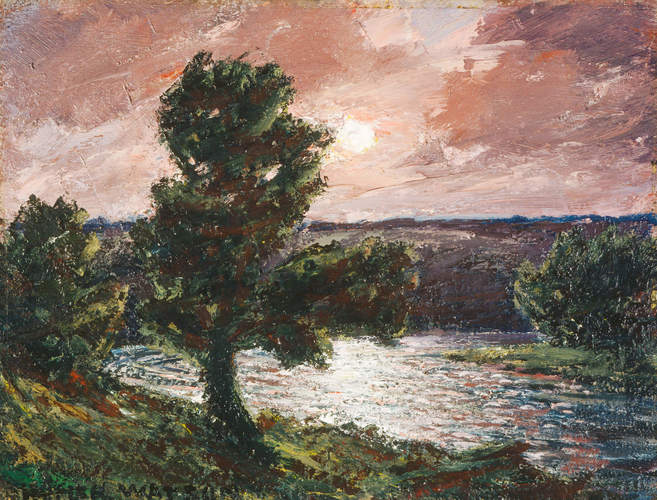
Oil on canvas, 31.8 x 41.9 cm, Library and Archives Canada, on loan to Laurier House, Ottawa
The painting’s small size was due principally to the several health crises that had hampered the seventy-eight-year-old Watson’s ability to work on a larger scale. Although the thickness with which it was painted, the corresponding loss of naturalistic detail, the darkness of the landscape, and the startling colours in the sky and river were not innovations at this point in Watson’s career, they are brought together here with a new degree of intensity. Moonlit Stream thus exists as a highly personal end-of-career statement by an artist who had been disconnected for some fifteen years from developments elsewhere in Canadian art.
This Spotlight is excerpted from Homer Watson: Life & Work by Brian Foss.
 The Weight of Absence
The Weight of Absence
 Abstract Alberta
Abstract Alberta
 The Art of the Body
The Art of the Body
 Rococo Riff
Rococo Riff
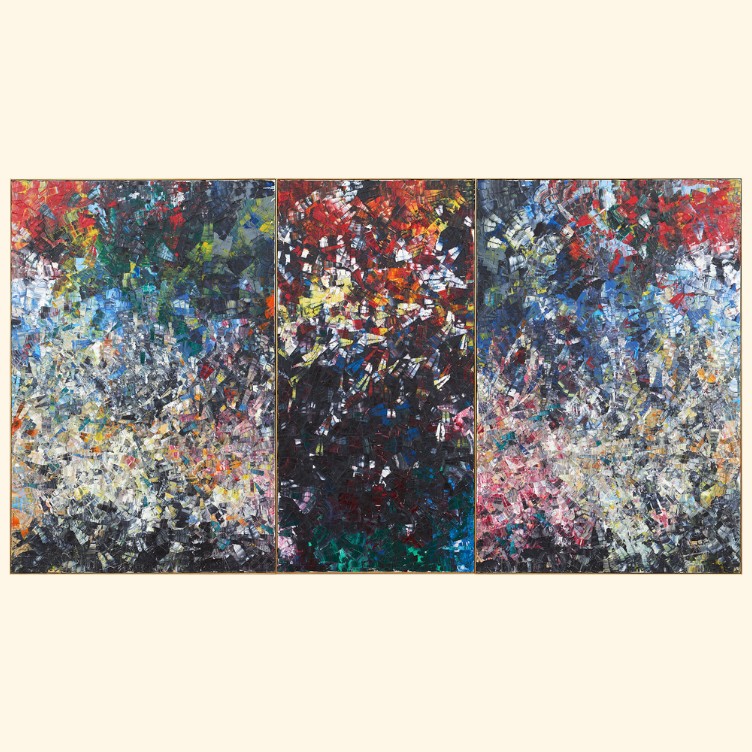 In Memory of Monet
In Memory of Monet
 Pyramid Scheme
Pyramid Scheme
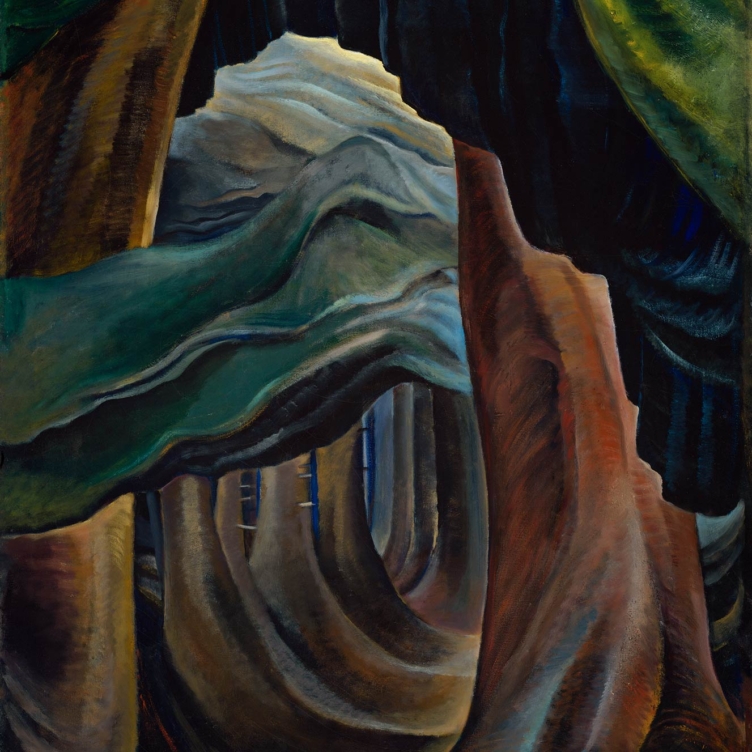 Transportive Trunks
Transportive Trunks
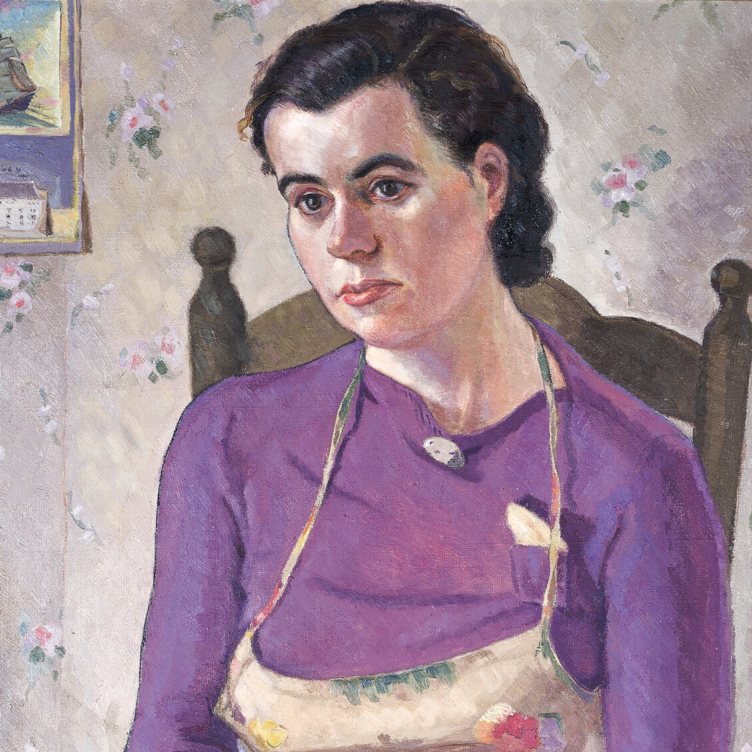 The Military Mate
The Military Mate
 Looking Up on the World
Looking Up on the World
 Vessel of Despair
Vessel of Despair
 Layers of Meaning
Layers of Meaning
 In Parallel to Nature
In Parallel to Nature
 Wheel of Fortune
Wheel of Fortune
 Paintings after emotional states
Paintings after emotional states
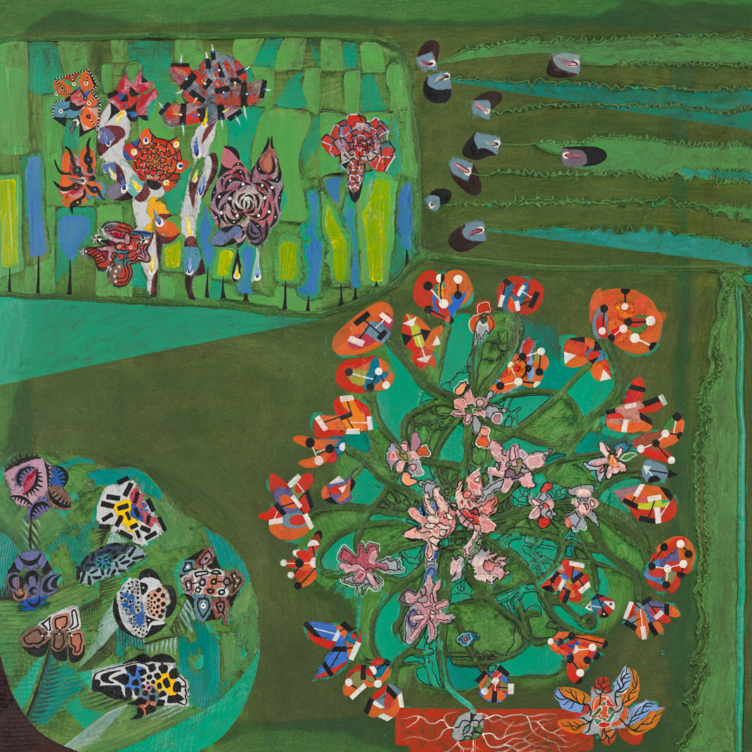 Garden of Delight
Garden of Delight
 Stitching the Archives
Stitching the Archives
 A Working-Class Hero
A Working-Class Hero
 Imagining Entangled Futures
Imagining Entangled Futures
 Bridging Far and Near
Bridging Far and Near
 Soft Power
Soft Power